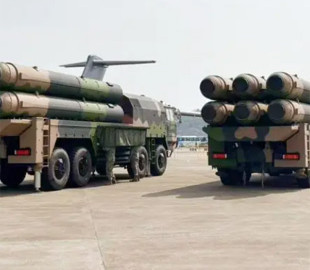
At this year's Zhuhai Air Show, Chinese manufacturers presented the HQ-19 anti-aircraft missile system, also known as the Hongqi-19. This system is designed to combat ballistic missiles and is similar in concept to the American THAAD-ER system. Although this is its first public demonstration, this SAM is actually already in service with the Chinese military and has been reported.
The HQ-19 system is built on the basis of a high-mobility truck with an 8×8 wheel formula and has six launchers. It uses a cold launch mechanism at a steep angle, which allows it to intercept incoming ballistic missiles. Its 610A information radar is capable of detecting targets at a range of approximately 4,000 km, covering areas from northern South Asia to the interior of China. The HQ-19 command and control system integrates radar data to improve target tracking and interception.
The HQ-19 guidance system includes an infrared homing head with side windows, designed to reduce atmospheric interference and ensure accurate targeting at high altitudes. The rocket has a two-stage solid-fuel rocket engine with a carbon-plastic construction. Its configuration provides a pulse of 260 seconds for higher maneuverability. The design of the rocket engine provides for the possibility of a double pulse, which should improve the final kinetic efficiency and increase the range of the rocket. This configuration allows the missile to maneuver with acceleration during interception.
200% Deposit Bonus up to €3,000 180% First Deposit Bonus up to $20,000It is reported that the HQ-19 interception range reaches 3000 km. The kinetic damage warhead makes this system one of the few in the world equipped with such a mechanism. Numerous tests confirmed the functionality of the air defense system, including interception at an altitude of more than 200 km.
The demonstration of the HQ-19 at the air show may indicate the readiness of the weapon for potential export. China's defense industry is showing interest in expanding its customer base and wants to gain a foothold in emerging markets. The capabilities of air defense systems can become an alternative for countries looking for similar defense systems. This approach reflects China's interest in strengthening its military export sector along with its global economic influence.
Along with the HQ-19 presentation, China highlighted its strategic emphasis on expanding its missile defense capabilities in response to changing global power structures and regional security issues. safety Comparison of the system with the American THAAD and SM-3 systems has aroused interest, and its declared capabilities may affect the dynamics of regional security. Observers note that the HQ-19 can serve as a countermeasure against ballistic missiles in the South Asian region.

